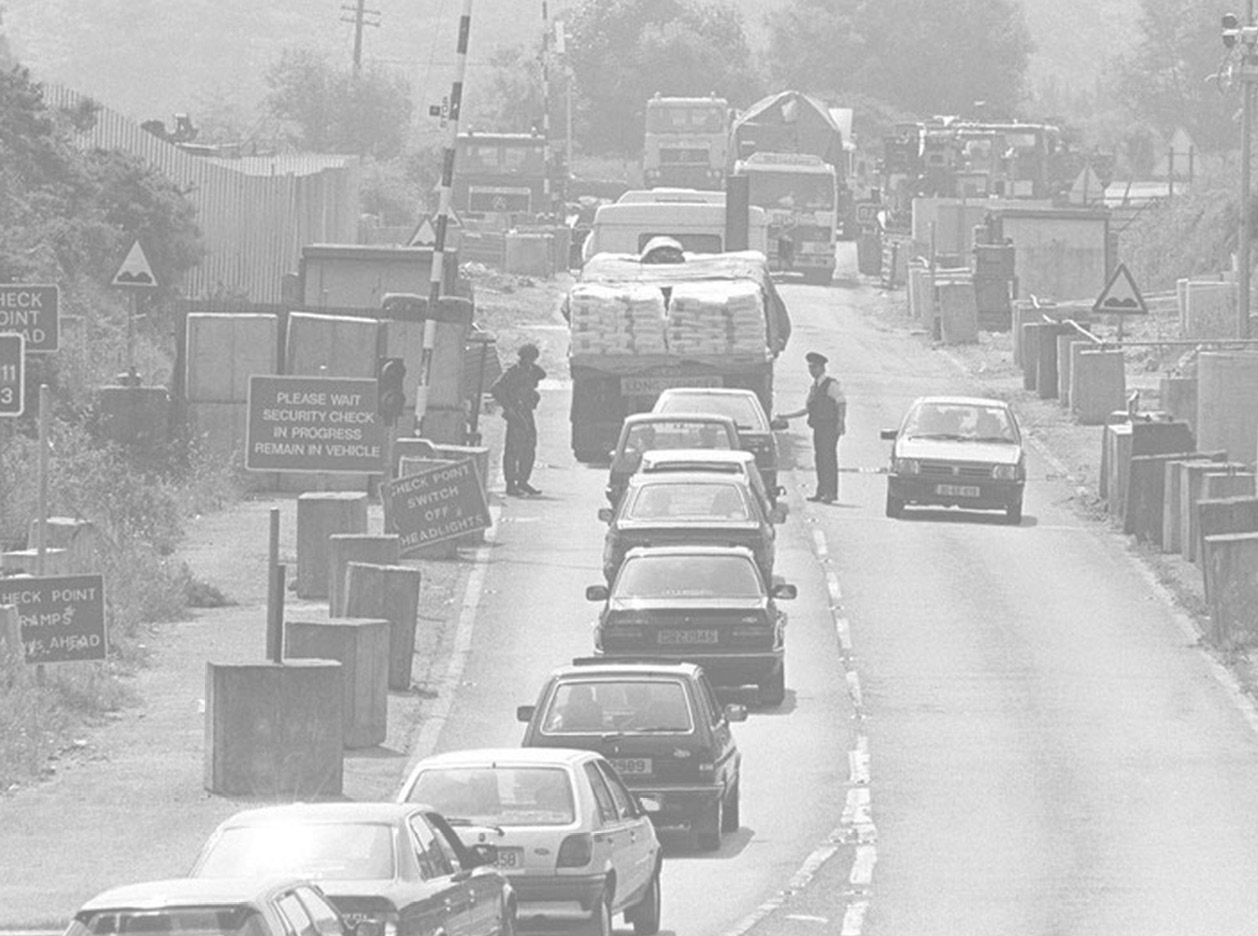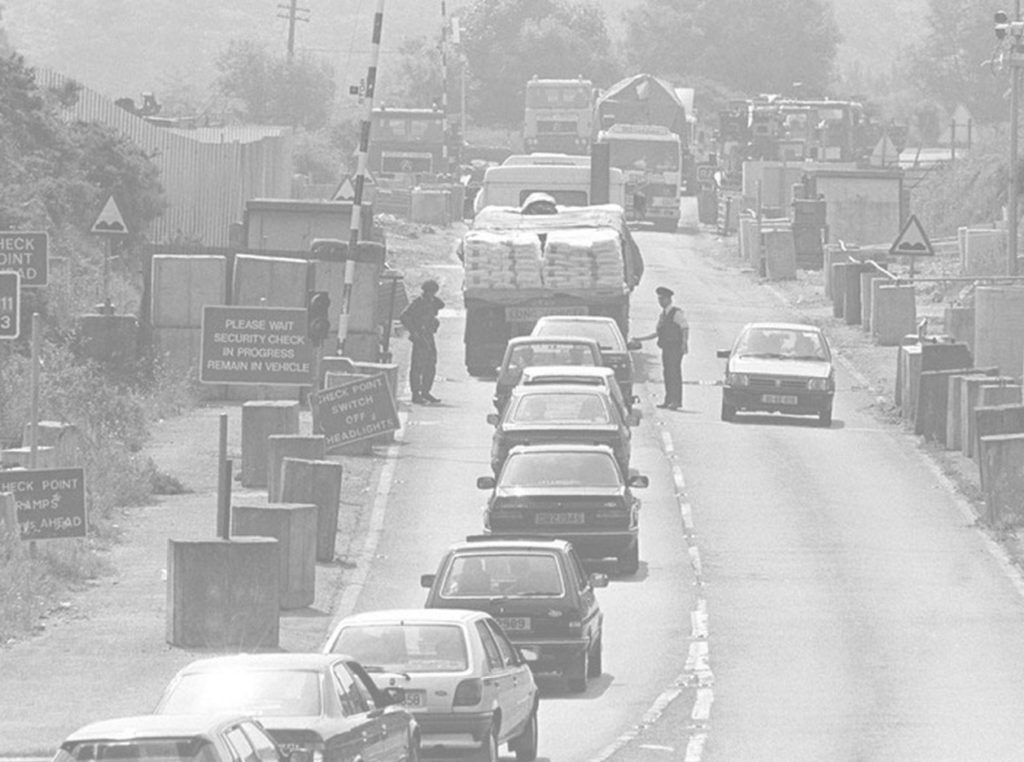Frictionless or fantasy?


The UK’s exit from the EU means its extraction from a project centred on enhancing transnational cooperation and movement across state borders. Katy Hayward, a senior lecturer in political sociology at Queen’s University Belfast, writes.
Political leaders from Belfast to Brussels have rushed to assert that Brexit should not automatically mean a hard border at the new UK/EU frontier on the island of Ireland; indeed, Prime Minster May has expressed her desire for a ‘seamless and frictionless’ Irish border.
The extent to which ‘seamless and frictionless’ borders currently exist between these islands is, however, due in large part to the common EU membership of the two states. The removal of customs posts from along the border was the most obvious manifestation of the expansion of the Single Market. For most citizens, common EU regulations, legislation and provisions have helped reduce barriers to cross-border business, retail, work and study (including mutual recognition of qualifications, food safety standards, aggregation rules for social insurance payments, and an end to mobile phone roaming charges). Change in the status of UK citizens, goods and services vis-à-vis the EU (and vice versa) means that inevitably there will be significant increase in the ‘friction’ experienced and the scale of immigration and customs controls required after Brexit. As such, thoughts have turned to consider the scope for bilateral UK-Ireland arrangements for ‘frictionless’ borders between the two.
To this point, the preservation of the historical Common Travel Area (CTA) has been posited as the primary means of ensuring ease of movement for people between these islands after Brexit (as seen in the UK Government’s Brexit White Paper and May’s letter to Tusk). A set of understandings and practices, rather than an act of policy or law in either jurisdiction, the Common Travel Area means that those moving across the islands of Great Britain and Ireland are not subject to immigration controls. Recognised in the UK and Ireland’s opt-out of the Schengen Agreement, the CTA means that there has been necessarily close coordination between the two states on immigration policies. Upholding the CTA, however, does not get away from the fact that the immigration policies of the two states will fundamentally diverge in after Brexit, given the different status to be afforded to non-Irish EU citizens in the UK. Even if a border can be experienced as ‘frictionless’ at the point of entry, border controls will still be manifest, just in different ways.
“the quest for a post-Brexit ‘frictionless’ arrangement cannot merely depend on the EU turning a ‘blind eye’ to the state of Ireland’s borders with the UK.”
In fact, even as the EU has upheld ‘frictionless’ movement for people, goods, services and capital among its members, it has gone to significant lengths to fortify its external borders. The new Security Strategy of the EU bolsters its powers to screen, monitor and block the movement of people into the EU. This includes the scrutiny of airline passenger name records, the implementation of the European Border Surveillance System (Eurosur) and the erection of (temporary) border fences between and around EU states. Ireland’s border with the UK will become an external frontier of the EU after Brexit. Although our island geographies and opt-out from the Schengen Area create a unique environment for managing risks, the EU would not wish to see its new northern frontier become a weak link in its fortification. As such, the quest for a post-Brexit ‘frictionless’ arrangement cannot merely depend on the EU turning a ‘blind eye’ to the state of Ireland’s borders with the UK.
How, then, to tackle the challenge of enforcing necessary border controls for customs and immigration without needing to place physical barriers at Ireland’s borders? There are three main ways in which border controls can occur beyond the line of the state boundary. First, ‘pushed-out’ borders, in which state controls are experienced prior to a person arriving at state territory. Pre-departure checks mean that, even as one purchases an airline ticket, information is provided that will enable processes of categorisation and risk-assessment. Secondly, juxtaposed borders allow state controls to be manifest in the territory of another state (such as UK Border Force working in Calais or, as some have suggested, in Irish ports after Brexit). These types of control rely on close cooperation with other states (including in security and information sharing).
‘Smart borders’ can also facilitate frictionless border management. Such measures centre on capacity for risk assessment. Intelligence and information are invaluable here. Again, the use of smart borders requires close communication with other states and this will need to be a priority for the Brexit negotiations. The EU has recently enhanced its capacity for border controls through a Smart Borders Package, centring on information systems. Access to common databases of information on passengers is a key negotiating point for the UK, as security cooperation (and the implied threat of its withdrawal) has been emphasised in Prime Minister May’s letter to President Tusk triggering Article 50.
Another form of border management occurs internally to states, namely ‘point of contact controls’. Such controls are sometimes called ‘invisible’ borders’ because they are often barriers or restrictions which are hidden to the majority of citizens. Point of contact controls are currently much more extensively used in England than the rest of the UK, given the application of the 2014 and 2016 Immigration Acts. The requirements in such Acts for landlords to take photocopies of passports of tenants is an example of citizens being required to take on the roles of ‘border agents’; it can be anticipated that post-Brexit border controls might entail an expansion of such laws. Other more traditional – but expanding – forms of internal border controls are used by security forces acting on behalf of the state, e.g. UK Border Force raids on employment premises or police checks in transit hubs or on public transport (as in passport checks by An Garda Síochána on bus passengers along the Belfast-Dublin corridor).
Beyond these general trends of border management, much has been made of the potential for technology to evade the need for physical border checkpoints altogether. Automated border controls (ABC) check the eligibility of the holder to use the system, check the information against immigrations or customs databases, and can compare live information (e.g. number plate) with that stored on the chip (e.g. on the passport) or tag (e.g. in the vehicle). However, their effectiveness requires full disclosure of information prior to departure as well as pre-registration of all users of the system. And what happens if a breach is detected or a fault occurs? Smugglers avoid registration and checks, and they profit from being able to provide false information. Even aside from the resource-intensive nature of ABC (software, hardware, personnel, inspection facilities), greater reliance on ABC inevitably means a greater scope and incentive for breaching these border controls.
‘Frictionless’ border practices are not a fantasy, in fact they are already advanced in the UK and across the EU. It would be wrong to see them only as offering new means of smooth cross-border transit and easy mobility; such practices raise the spectre of a significant expansion of state power, surveillance and capacity for discrimination. Such matters have particular sensitivity and resonance in the UK/Ireland context. What is more, there is the very real risk that those most affected by the future development of such border management systems will not be those who are seeking to evade controls or detection, but rather those who engage with the systems of monitoring as part of everyday modern life, be it by buying a train ticket, making a customs declaration, or even by signing a rental lease.
Profile: Dr Katy Hayward





